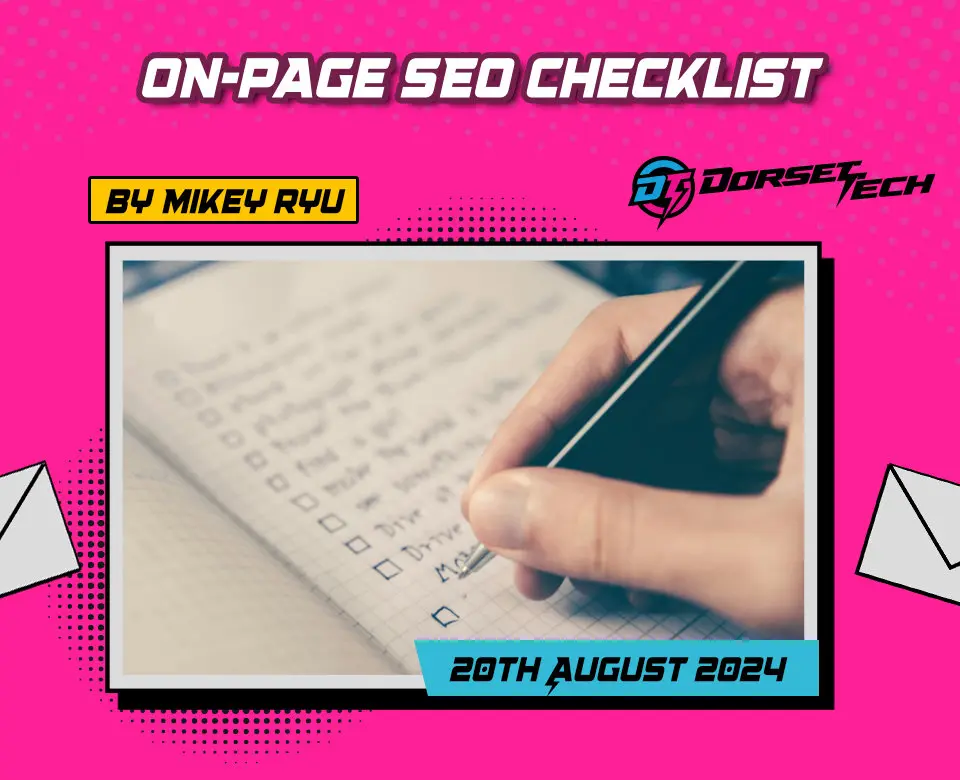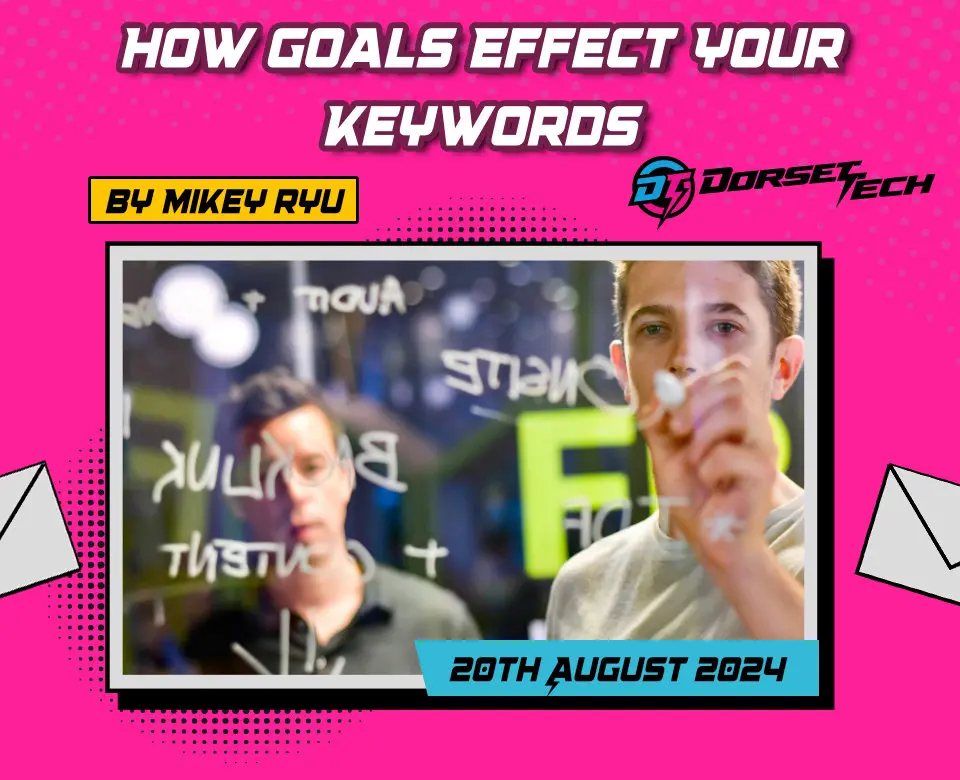
How To Do Keyword Research For Free
In today’s competitive digital landscape, mastering the art of keyword research is essential for any successful marketing strategy. Effective keyword research not only helps you identify the search terms your target audience is using but also enables you to create content that meets their needs and drives meaningful engagement. This guide will walk you through the essential steps of keyword research, from defining your goals and understanding search intent to choosing the right type of content for your keywords. By the end of this guide, you’ll be equipped with the knowledge to boost your SEO efforts and enhance your content marketing strategy.
List of topical points that will be covered
- Step 1: Defining Goals
- Step 2: Finding Your Keywords
- Step 3: An Introduction to Search Intent
- Step 4: How do Search Intent affect the content
Step 1: Define Goals
One of the most important parts of any marketing plan is to have a goal. Having a goal allows you to fine-tune your keyword research to play into your topic and the action you want (also known as intent) and having a target audience allows you to write content that resonates with them and directs them to the desirable action.
Defining Your Goal:
Before you do any keyword research you need to have a solid goal in mind whether it be increasing the organic traffic or rankings of your services pages, or increasing your blog’s search traffic. A goal helps you identify exactly what you’re doing and helps keep you on track.
Step 2: Find Keywords
Finding your keywords can seem quite tricky but it’s actually quite easy there are a couple of methods to finding your keywords, one using Google and another using the Ahrefs keyword generator.
Keyword research Method One – Google:
For this, you want to pretend that you are one of your potential customers and you’re looking for your services/products, think about what you would search for in Google to find your services. For example, if your company sells App development services then your customers are probably searching for “app development”, “app development services near me”, or “app development [area]”. You can also use Google’s suggestions to help you do:
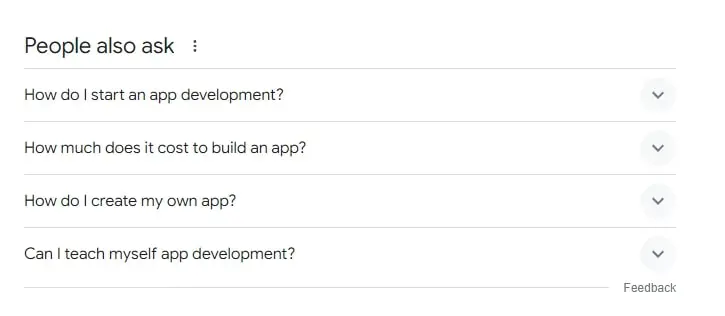
You can also use the “people also search for” section:

Another method that you can use to find keywords while using Google is to use the auto-suggestion feature to find out what people are searching for.
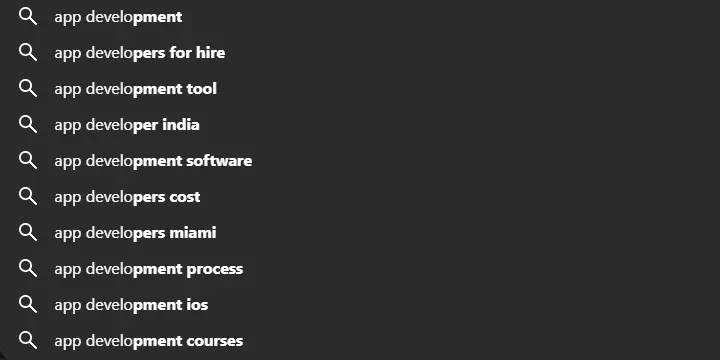
The Second Method – Ahrefs keyword Generator:
The other method uses the same thought process of thinking about what your customers would search for but you use a tool to help you understand the metrics behind it and find out more ideas. Head to the Ahrefs keyword generator tool and start by entering your seed keyword and making sure the location is set to your location.
For example, if people are searching for app development services then your seed keyword is app development:

Once you click “Find Keywords” you will be met with a long list of keywords and some data about those keywords, this includes KD (Keyword Difficulty), Volume (this is the amount of people who search for this per month) and updated this just tells you how long it was until Ahrefs updated their database.
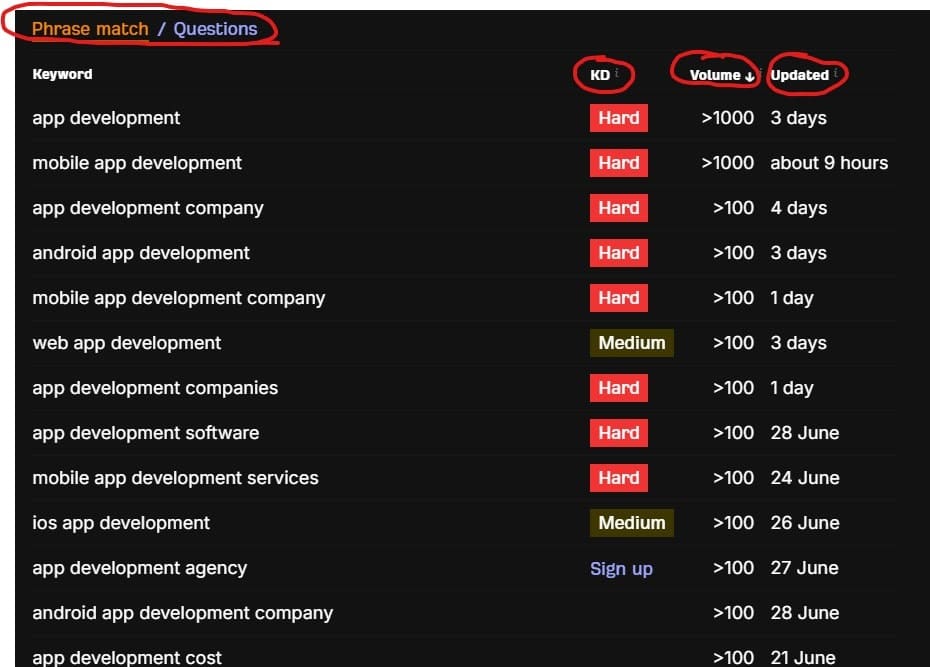
Once you have all this you can work out what keywords you think you can take and what keywords you believe would be beneficial to try and rank for. Another thing you have to make sure of before you decide to push for a keyword is if that keyword is relevant to your sector or your audience. You need to be able to think that if you wrote a piece of content targeted at that keyword, you could easily insert a CTA into your service without forcing it or breaking the “flow” of your writing.
- Think of what you would search to find your product or service – Ahrefs keyword generator
- Is the keyword relevant enough to your company that you can easily plug into your services/products?
Step 3: Introduction to Search Intent

Search intent plays a big role in how you write your content and what type of content you create. Search intent is the reason behind the search and without knowing the intent behind a keyword you won’t be able to write content that ranks high in search rankings. There are different types of interest and these play an important role in how your content is laid out, these include:
- Transactional Intent
- Informational Intent
- Navigational Intent
- Commercial Intent
INFOGRAPHIC
Transactional Intent:
The user intends to perform a transaction, some examples include:
- Buy iPhone 13
- Netflix Subscription
- Order Pizza Online
Information Intent:
The user is looking for information or answers to questions, some examples include:
- How to do keyword research
- Weather today
- What is search intent?
Navigational Intent:
The User wants to find a specific website or page, some examples include:
- Dorset Tech
- Facebook Login
- YouTube
Commercial Intent:
The User is researching products or services and intends to make a purchase soon but is still comparing options, some examples include:
- best laptops 2024
- Best SEO Service
- Top Restaurant in Dorset
Step 4: What Type of Content is needed
The next step to doing effective keyword research is to find out what type of content that your keyword requires this can range from, blog pages(Informational Intent) to service pages (Transactional intent). There are three main types of content that I wish for you to focus on, these are bottom-funnel content (BOFU), top-funnel content (TOFU) and linkable assets. All of these content types have their own array of keywords that fall into them and content formats to go with it and to make sure you get the right one let’s break down the different types.
BOFU (Bottom-Funnel Content):
This content is designed to convert leads into customers by addressing final decision-making needs, offering detailed product information, and reducing any remaining purchase hesitations. This includes but isn’t limited to:
- Product Demonstrations
- Customer Testimonials
- Case Studies
- Product Comparisons
- FAQs
- Discounts/Promotions/Insensitive
- E-books/Guides
All of these are aimed at increasing the chances of someone converting and becoming a paid customer.
TOFU (Top-Funnel Content):
Top-Funnel content is aimed at generating awareness and attracting a broad audience by providing value and engaging potential customers who may not yet be familiar with your brand or have a specific need. Some examples include, but are not limited to:
- Blog Posts
- Infographics
- Social media Posts
- Educational Videos
- How-To-Guides
- Checklists
All of these are aimed at increasing your users’s awareness and knowledge of the field by providing them with inbound content.
Linkable Assets:
Linkable assets are valuable pieces of content created with the primary goal of attracting backlinks from other websites, thereby improving SEO and increasing domain authority. Some examples of these are:
- Comprehensive Guides
- Infographics
- Industry Reports
- Interactive tools/Calculators
- Templates/Checklists
These are aimed at gaining high-quality backlinks from other sites to boost your domain authority and make your company an authority figure inside your industry.
So What Type of Content Should You Write:
When trying to figure out what type of content you should write there is one option that is completely free and professionals use all the time, and that’s the Google search results page.
For this example let’s say your keyword is “best phone” If you do a Google search you will be met with thousands of search results but for this, we need to look at the top four and notice a trend.

From the image above you can see all of the similarities throughout the search results, all of them are list posts, and they all include 2024 (for timely relevance), they all include the keyword or some variation of it and two of them include the word “buy” which suggests that the intent is commercial. Now you know what type of content you need let’s work out how to write it better then
By following the steps outlined in this guide, you can develop a robust keyword research strategy that aligns with your marketing goals and resonates with your target audience. Understanding search intent and selecting the appropriate content types—whether it’s bottom-funnel content to drive conversions, top-funnel content to raise awareness, or linkable assets to build authority—will empower you to create effective and engaging content. If you need further assistance or want to access more resources, don’t hesitate to download our comprehensive guide and take your keyword research to the next level.



